98% POLYESTER 2% COTTON // SS 21 // Design project starting from 5th Semester
Working with limitations is a creative force. For the summer semester 2021 we still weren’t back to normal, continually being forced to think and work in different ways. The challenge to work with nylon materials and to push the boundaries of the usage of this material was the main focus and task of this semester project, to put the negative notions of this material to one side and concentrate on and evolve positive ones.
Outerwear and accessories are the most obvious categories where nylons are used. Poppy colours, clean shades, construction, finishings with zips, velcro and seamless bonding have become the obvious codes for these kinds of garments and accessories. The students were challenged to put these accepted norms into question and refuse the standard trimmings and the obvious ways of constructing these kind of materials and research the more craft based techniques in other categories where nylon is used as well.
Each of the students were asked to determine from the beginning of the project a percentage of nylon they will use to create their final outfits and accessories but it must be at least 50% nylon the rest can be any other material.
Lecturer: Prof. Wowo (Waldemar) Kraus, KM Alexandra Börner , Stefan Hipp, Dorothée Warning
// Mona Gutheil & Laurin Stecher „STEREOTINDER“

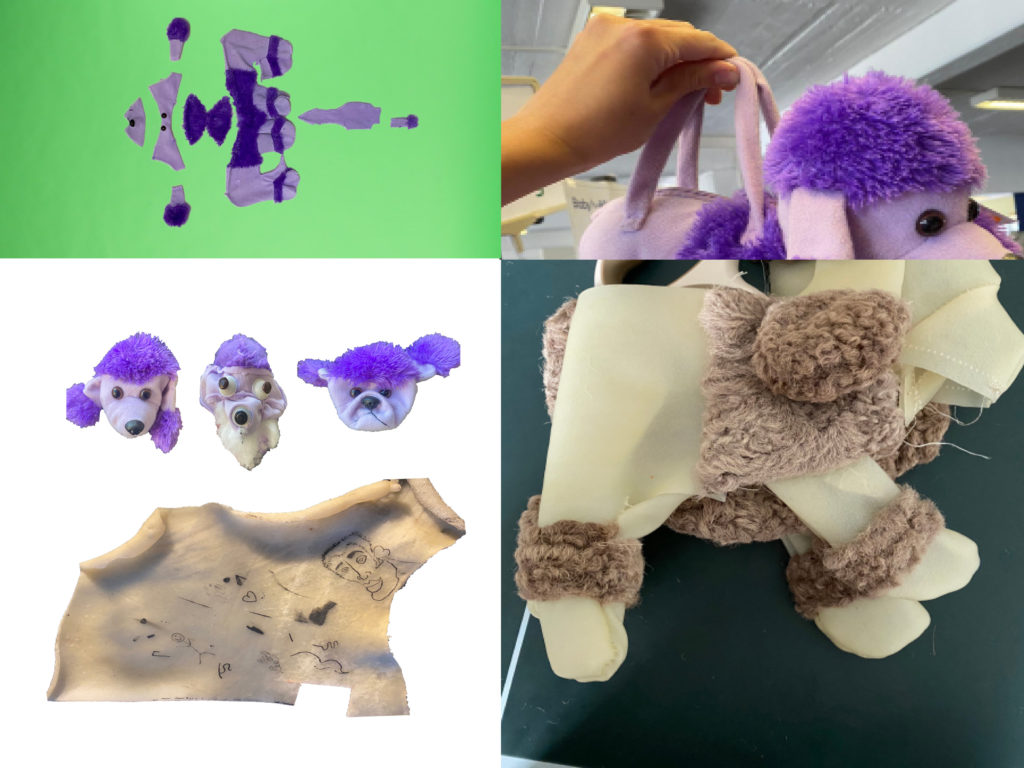
It seems that most people strive for individuality. We consume clothes in order to stand out from our surroundings. However, we mostly still move within a pigeonhole and thus set clear codes to our outside world. What happens when we consciously resort to strongly connoted items of clothing from different pigeonholes and remove them from the contextual pigeonhole? This problem, the striving for individualism,
not only concerns the end consumer, but also the designer.
The human brain, as well as artificial intelligence, collects data and information to generate new contexts. We categorise and systematise our environment, thus reducing complex information to stereotypes. This happens mostly in an unconscious cognitive mapping. We have incorporated the design methodology (morphing) of an artificial intelligence into our design. The Ai cannot distinguish within its data set where the backpack ends and the top begins.
So we were able to morph stereotypical garments within a drawer into something new. It is precisely through technical innovations such as artificial intelligence that the role of the human designer is also called into question. The stereotypes depicted refer to the western world, the Berlin area. With our project, we ourselves take on the role of the conscious observer and, by dissolving the context, attempt to remove a categorization into pigeonholes.
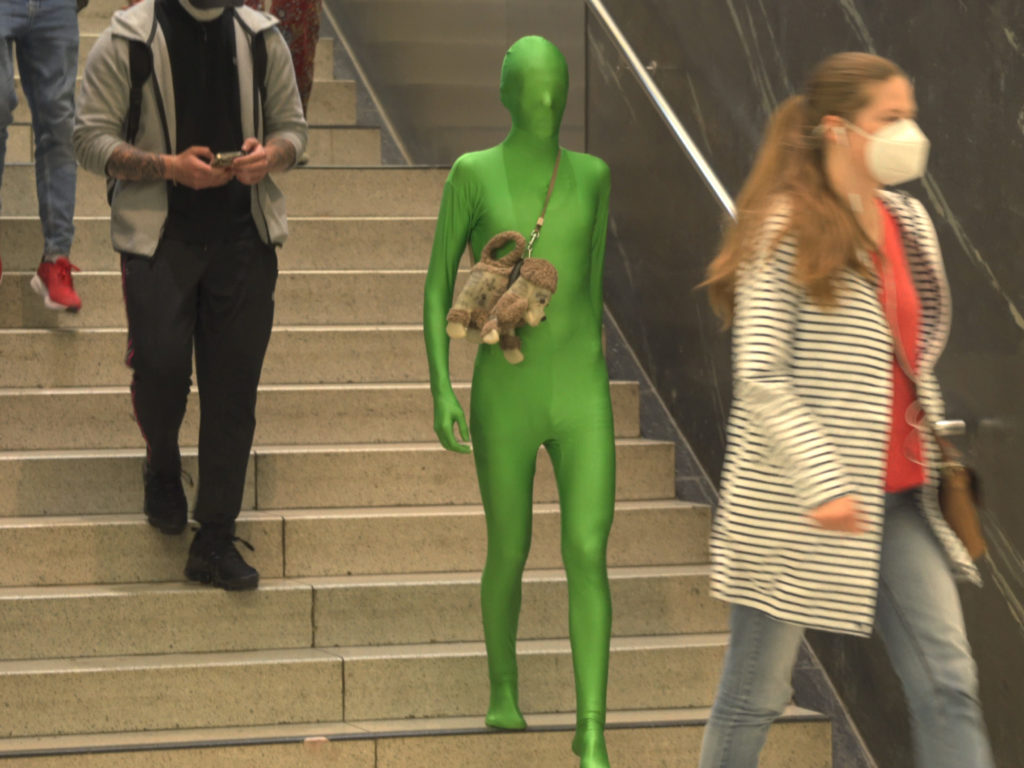
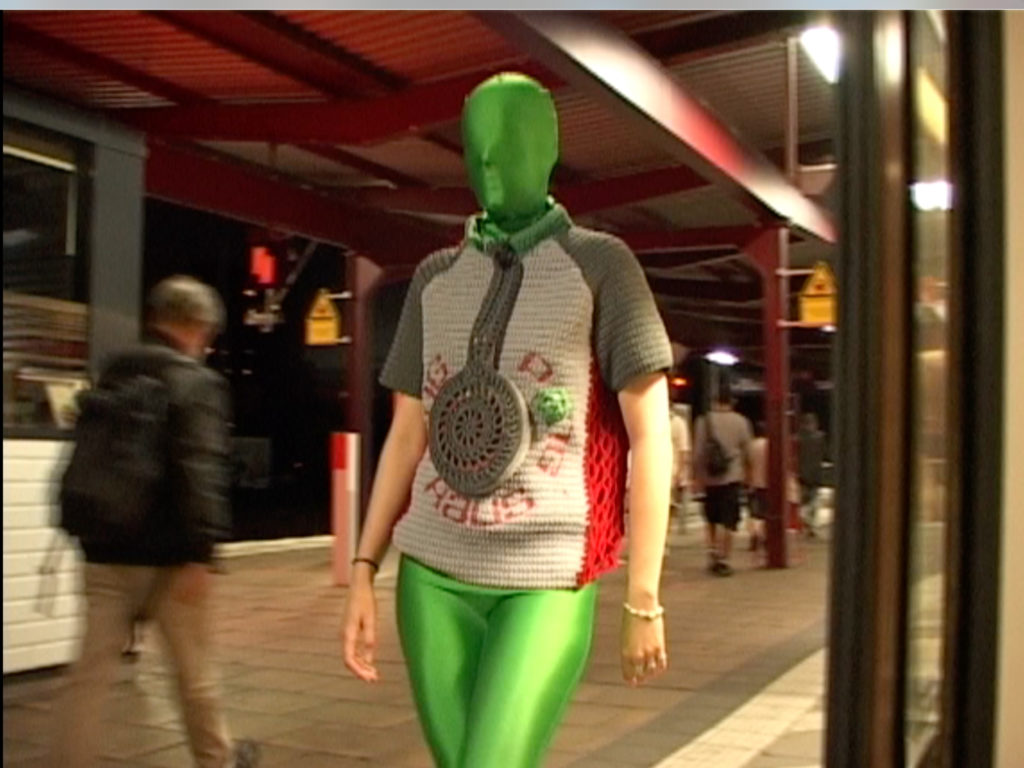
// Luzie Richter „Landlust“
>> a project about the countryside, the people and technology <<
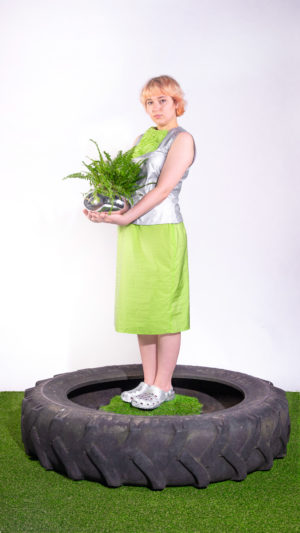
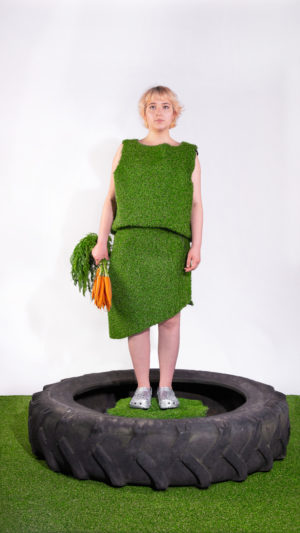

It’s summer in the countryside. The last couple of weeks were wonderful. You sit in your small house, with the most beautiful view over all the summerly fields, meadows and the woods. You stand up from your rocking chair, put your book aside and walk to the terrace. You step outside. Your naked feet feel the tingle of the grass. Breath in. Breath out. The air smells sweet and warm. You take your little basket and straw your way to the strawberry field.
Bling. bling. You get a notification. The tomatoes need water. You press OK. Seconds later the drone heads of with your watering can.
Later that day you take your old bike out of the shed and head to the farmers market. It’s already evening, but the air is still warm and full of crickets chirping. On the dusty country road a tractor without driver passes you. The tractors turns on a small dirt track and continues it’s way through the golden wheat spikes. It’s a perfect summer day.
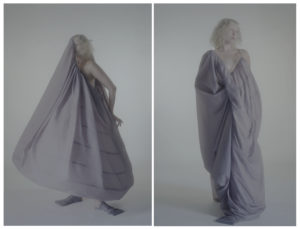
// Kristel Jänes „Ühendus “
Connecting the structural design of Soviet era block buildings & the idea how simple form can affect the viewer. How much excess one can remove without making it unrecognisable?
In this context my main interest was in balconies – they are structurally very limited & firm, but also have the feeling of freedom through users own individuality. It’s a space that belongs to to the owner and to the public at the same time.
Through using historical shape my aim was to create silhouette that took up space to give the wearer the feeling of security and was easily changeable.
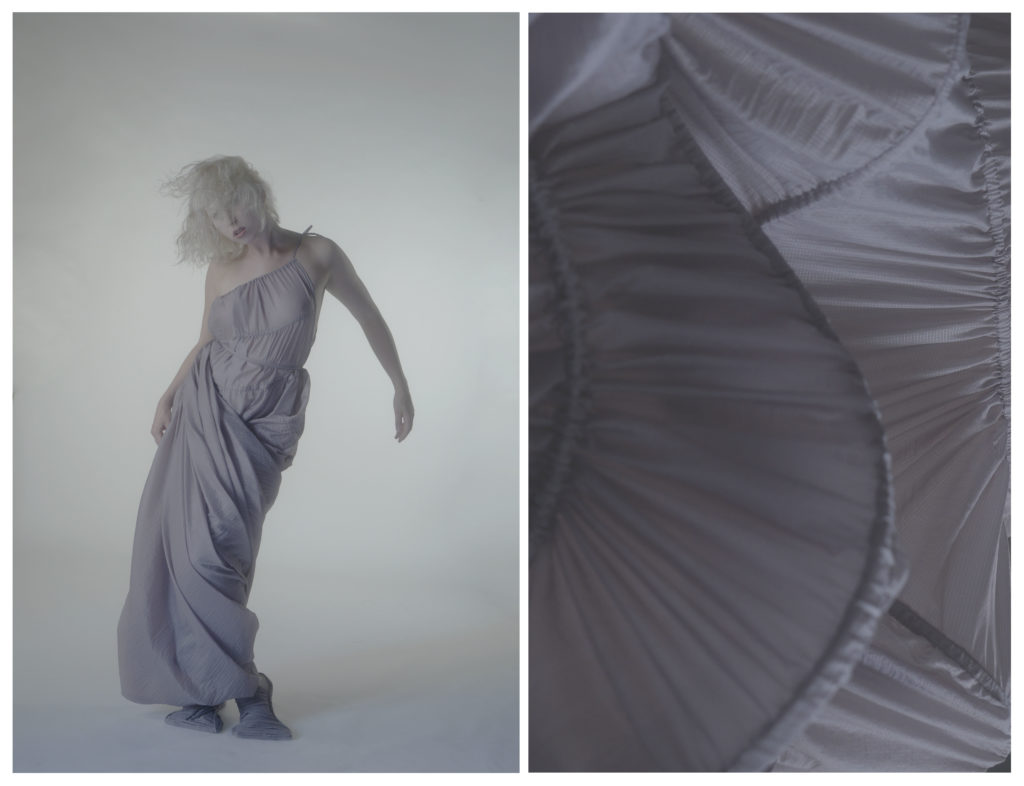
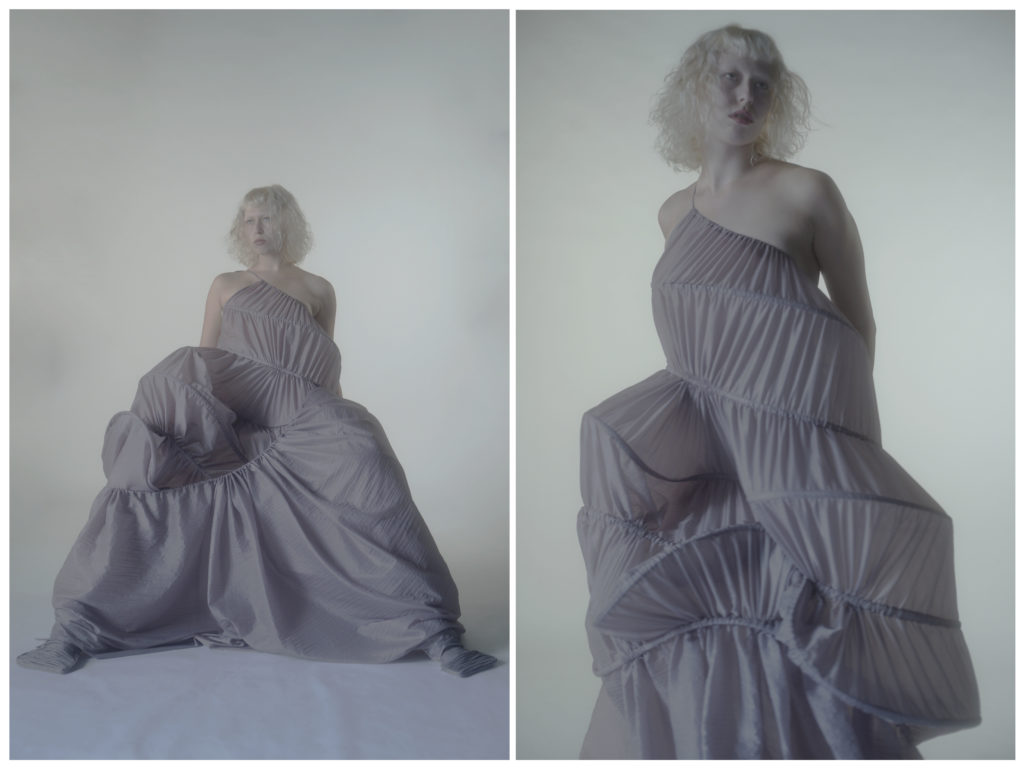
// Sezgin Kivrim „Anneaneme“
This semester I teamed up with a person who is very special to me – my grandmother. Listening to her personal stories, analyzing her clothing behavior and closet, seeing all the old pictures and spending a lot of quality time together, I had a very yet different but interesting and productive design process.
Aiming to create garments combining her personality, tradition and typical style on the one hand side and the use of nylon and my modern interpretation on the other hand side, the result is unisized garments fitting my grandmother, mother and younger sister leading to a discourse by three generations questioning the understanding of style, sustainability and comfort.
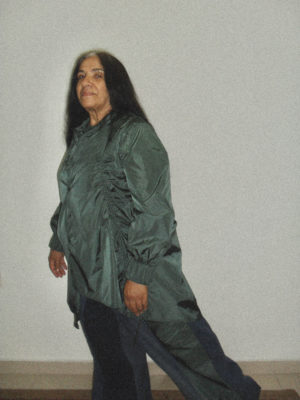
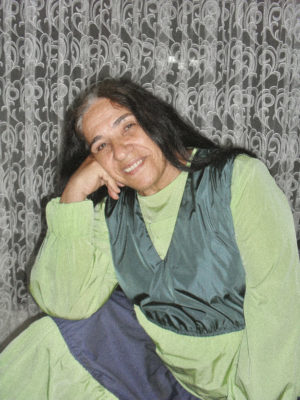

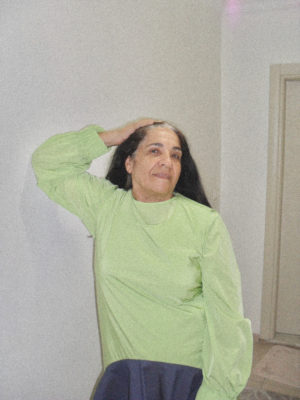
// Denise Kipke „DIS / CONNECTED“
Social Distancing lead to meetings in non-places, places in the digital world. These meetings on the internet restrict. Everything is focused on the face. Facial expression is the only expression that determines our being. The body becomes disconnected, cut off by the frame of the screen.
We curate ourselves in a digital cage, rectangular in front cameras that will spot every single one movement. No one can feel what it means to experience space and confinement, tightness in this non-place, in this digital universe.
In the man-made universe, the individual merges with the glossy screen to become an object.
This work is based on reconnecting the head with the body. The fragile subjectivity of the human being is transformed through a return to the perception of the physical: space and tightness. Freedom and limitations. The reconnection of subject/human and object/clothing.
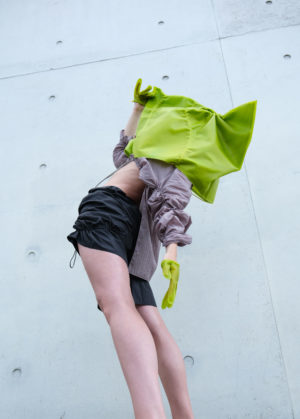
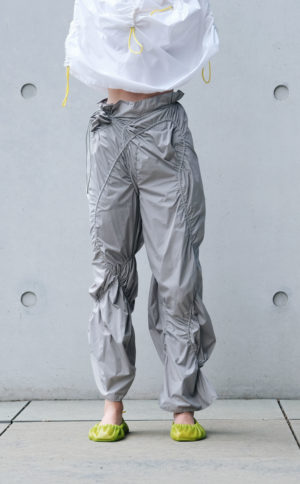
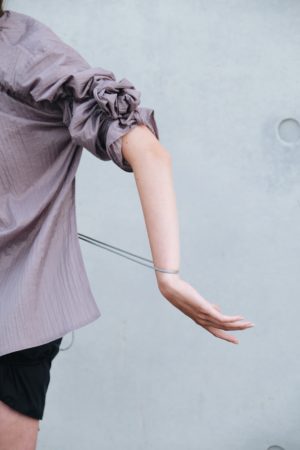
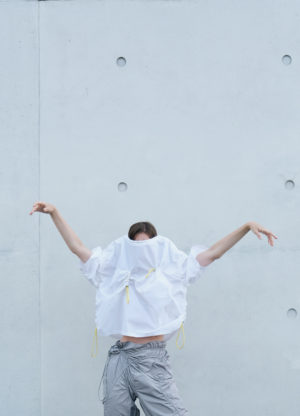
// L M „Outfit (2021)“

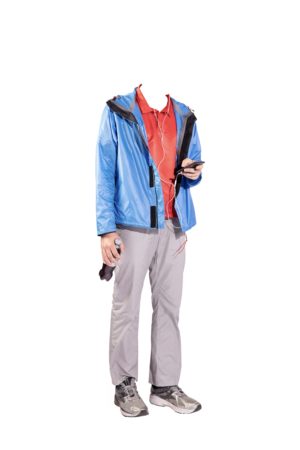
An approach of preserving an image through cloth.
In the form of a portrait of an (in)visible person dressing and appearing in the so far 21st Century.
A person with a maximum of things or nothing to project into it.
A reproduction of existing complexities in which a person of our time lives a live in.
(reproduciton) <- – -> (the real)
It is about „reality“, outfits, „the void“ and design depression.
(violently) normal.
// Alex Hein „Sempro“
Working with a controversial and personally unconventional material is already a challenge.
When, additionally to that, things like limitation, unfamiliar ways of finishings and closures, fabric overhang,and an ongoing lockdown also come into play, you have to think outside the box and leave your comfort zone. In the beginning there was nylon; in different variations, in almost endless yardage.
Why not getting inspiration from the fabric itself? How is it different from other fabrics? How does it behave?
How does it sound? How does it feel? How does it move?
Rethinking the typical usage of the fabric, questioning its value, try to make it more accessible to my own aesthetics, my designthinking and my wishes for the fabric. The garment research focused on volumes, the back as a sensual bodypart, cutouts, narrowing, gatheringsand effortless closures
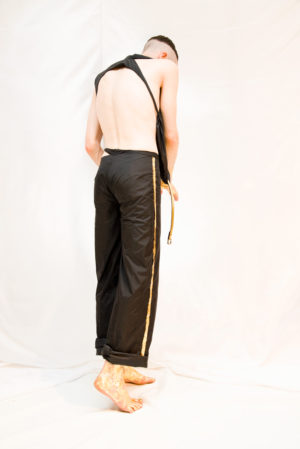
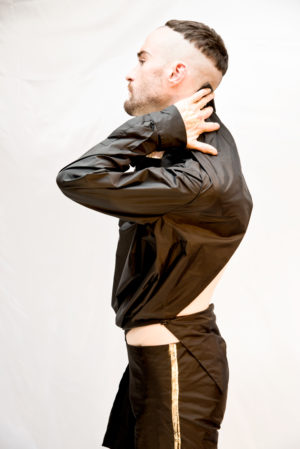
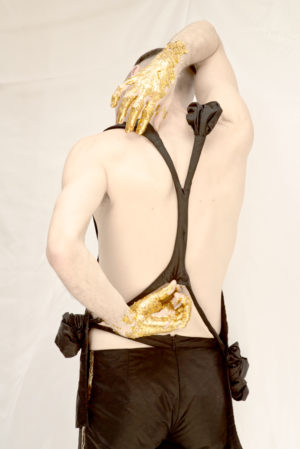
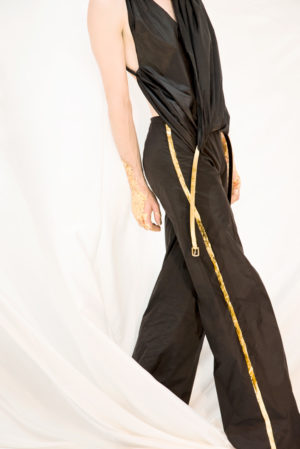
// Maurice Gerlach „GIKS“
Graffiti opened up the world of art to me and inspired me when I was young. The function and appeal is to create something new out of something old, and to make things new through painting. This function inspired me to transfer and combine graffiti into fashion, which is why I decided to do an upcycling project with secondhand clothes. I reworked the garments. In addition, they were written on with markers. To deviate even more from the old design, I padded the garments and incorporated lettering with the help of quilting. To make the garments reversible, I added a lining. The garments are very detailed, functional and convey the art of graffiti in combination with upcycling.



